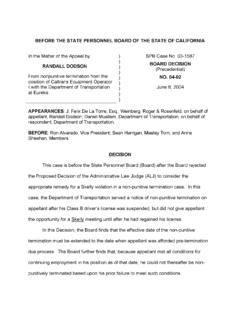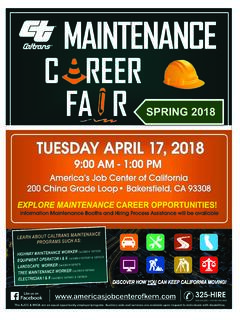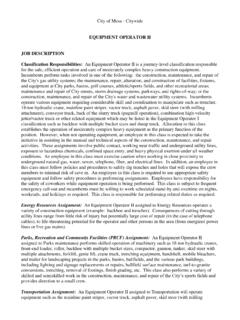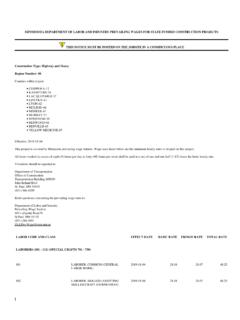Transcription of Raised Pavement Marker Automated Placement Machine ...
1 Raised Pavement Marker Automated Placement Machine Business Development Case December , 2006 Prepared By: Geoff Jennings Professor Andrew Hargadon caltrans Innovation Program Graduate School of Management University of California - Davis Prepared For: Bob Meline Department of Research and Innovation California Department of Transportation Professor Steven A. Velinsky Advanced Highway Maintenance and Construction Technology Center Department of Aeronautical and Mechanical Engineering University of California - Davis Many thanks- Considerable Input from Duane Bennett Copyright 2013, AHMCT Research Center, UC Davis 1 Program Overview About the UC Davis Graduate School of Management (GSM): The mission of the UC Davis Graduate School of Management is to be a leader in management research and education.
2 As part of the world's premier public university, we pursue significance, excellence and scholarly rigor in our research, teaching and service to the people of California. We emphasize curiosity, creativity and high standards in the generation and transmission of theoretical and practical knowledge relevant for About the California Department of Transportation ( caltrans ): caltrans manages more than 45,000 miles of California's highway and freeway lanes, provides inter-city rail services, assists more than 100 public general aviation airports and works with local agencies. caltrans carries out its mission of improving mobility across California with six primary programs: Aeronautics, Highway Transportation, Mass Transportation, Transportation Planning, Administration and the equipment Service caltrans as a whole has an annual budget of $8 billion, of which $393 million is appropriated for maintenance activities.
3 About the Advanced Highway Maintenance and Technology Center (AHMCT): The Advanced Highway Maintenance and Construction Technology (AHMCT) Research Center has been developing robotic equipment and machinery for highway maintenance and construction operations. It is a cooperative venture between the University of California at Davis and the California Department of Transportation ( caltrans ). The research and development projects have the goal of increasing safety and efficiency of roadwork operations through the appropriate application of automation 1 UC Davis GSM Mission Statement, center/about #Mission%20 Statement 2 About caltrans , 3 Development Of A Prototype Telerobotic System For Debris Vacuum Positioning, AHMCT Research Report, 12/31/01 Copyright 2013, AHMCT Research Center, UC Davis 2 Table of Contents Program Overview.
4 1 Table of Contents .. 2 1 Abstract .. 3 2 Project Description .. 4 Elevator Pitch .. 4 AHMCT RPM Development Plan .. 4 Value Proposition .. 4 Current RPM Placement 4 Cost Comparison .. 5 Project Objective .. 8 3 Technology .. 8 Status .. 8 4 Traffic Control Market .. 8 5 9 6 Acknowledgements .. 9 Copyright 2013, AHMCT Research Center, UC Davis 3 1 Abstract This project was intended to evaluate the business case for developing new machines or techniques for automating the process of placing Raised Pavement markers for caltrans . It includes a brief evaluation of existing methods, and suggestions for areas of improvement. Within this paper, we look at the cost of the machines, operation cost, and savings, to determine what opportunities for improvement may be available.
5 Copyright 2013, AHMCT Research Center, UC Davis4 2 Project Description Elevator Pitch Automating the Placement of Raised Pavement markers ma reduce costs, and initial evidence indicates that the repairs may be longer lasting. AHMCT RPM Development Plan 1) Search for existing research and equipment related to RPM Placement innovations (completed) 2) Develop conceptual design for new RPM Placement Machine and build demonstration device (current) 3) Develop proposal for funding to extend capabilities of RPM demonstration device to road demonstration unit. (June 07) 4) Field test road test device with caltrans in limited highway dot Placement operations. 5) Obtain caltrans worker evaluations and recommendations from highway testing.
6 6) Develop proposal for full scale RPM Placement Machine design and fabrication. Value Proposition Current RPM Placement Methods Currently, the Pavement Marker Placement process is time consumingand creates a number of safety hazards. In a common scenario,a truck with a specially designed operator bay travels slowlyalong the road and stops at required intervals. An operator thenapplies bitumen at 400 _F to the road via a hand controlled dispenserand places the Marker on the bitumen by hand. This procedure requiresthe operator to extend his/her hand and arm into the oncomingtraffic. In addition, the slow moving truck requires lane closurewhich represents a hazard for the moving traffic. 4 The overall objective of the UCD/ caltrans project is to move the operator into the vehiclecab and apply markers while the vehicle is traveling at speeds of 10 mph ( 16 km/hr) or more.
7 The results of the UCD/ caltrans project showed that it is possible to fabricate a device thatis capable of applying Raised Pavement markers to the road surface while a truck stays in motion. 5 caltrans is responsible for a combination of primary freeways and secondary highways throughout the State. The primary freeways account for a large percentage of caltrans lane miles maintained. On high speed highways with more than two lanes, typically a lane closure is installed. On rare occasions were 4 5 IBID Copyright 2013, AHMCT Research Center, UC Davis5 only two lanes are present, two way traffic is flagged through a single lane past a moving lane closure RPM Placement operation or left to back-up for brief periods.
8 For the more common multi-lane highway RPM Placement operation the lane closure is placed with cones between the rush hour times of 10am-2pm. RPM Research Improvements6 Comprehensive Research I mprovements (applies to new or existing equipment ) Adhesive system upgrades: 1) Larger capacity adhesive melting pot: doubling the capacity of the kettle on the existing caltrans truck would save approximately half an hour a day. For the new design an increase of approximately four fold would be required to keep the Machine moving continuously. A more precise capacity valve would be determined from testing of the highway demonstration RPM Machine . This savings value would be implicit in the overall Automated Machine savings value.
9 Meaning this is a requirement for the Automated Machine to operate at a determined production scale which will be described later. 2) Increased melting pot heat-up time: As per caltrans crew input approximately an hour and a half to two hours a day is spent waiting for the adhesive to heat. Being real generous, lets say during half of this heat-up time the crew is loading supplies for the day s production and assigning duties and reviewing safety procedures. The leaves 45-60 minutes of idle time for the full crew of 4 minimum. 3) Switch to propane fired melting pot heat from electric: Reduces heat-up time by at least half and eliminates the large on-board AC generator. I suspect there would be equipment cost savings, but further design would be needed to obtain a reasonable estimate.
10 4) Adhesive recirculation system: It s just a better method of operation. It has many benefits, all of which are difficult to place a cost benefit. Mainly it extends the life of the equipment and reduces the cost associated with repairs. 5) Adhesive material handling scheme improvement: Also represents a far better method of operation. Adhesive stored in 55 gallon drums rather than small boxes. Material handling costs drop. Cost Comparison Dot Placement Costs The pattern dots are placed effects the cost analysis dramatically. A typical freeway lane dot pattern has reflector dots on 48ft spacing with 4 round dots placed 4ft apart centered in the 48ft gap. Copyright 2013, AHMCT Research Center, UC Davis6 Secondary highways generally use reflectors only with 10-15ft spacing.












